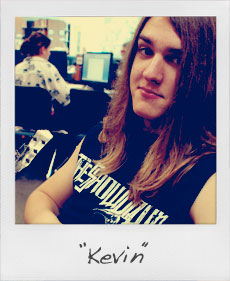

Customer feedback is amazing for improving your team’s morale and their skills. It transforms good teams into great ones.
But only if you manage it in the right way.
That ‘but’ is very important. You won’t see the full benefits of feedback if you just:
Firms at the very top of our VoC maturity model embed customer feedback throughout their business, in all roles, and make working with it a part of ‘business as usual’.
This is the ideal — sharing all feedback directly with your team — but it might not be directly achievable, depending on your current maturity level.
This might sound daunting, but time and time again, from both the thousands of businesses who have worked with CustomerSure, and our own career experience improving CX, it’s doable, and it’s revolutionary when it works.
Here’s a few real-life stories (names changed to protect the innocent) which show just how powerful feedback is:

“I’m going to fix this once and for all,” said David of a troublesome and unresolved customer problem.
David worked for a large UK-based software firm, and was an enthusiastic and capable technician. He went into overdrive fixing the problem for the next ten days (including the weekend and most of the nights). Then he tested and re-tested it - he was determined that nothing should go wrong for this customer again. This was typical of David’s attitude. Nothing in any of the customer service textbooks can substitute for the raw grit and attitude that someone like this brings to a team.
Yet when we sent a feedback survey to the customer, the score was 2 out of 10. The accompanying comment made everything clear.
“We were really pleased to have this problem finally resolved, but during the ten days you were working on it we had no idea what was going on, and our business was on its knees.”
David was devastated and rang the customer straight away to apologise and everyone ended up on good terms. But that day he learnt a lesson faster and more effectively than on any training course. Such is the power of customer feedback when it’s used by good people within a well designed process.

Mary manages a medium-sized call centre in Scotland. When I arrived to visit her one morning she was gripping a sheet of paper and she was clearly frustrated.
She explained “These are word-for-word customer comments that I’ve just shown to one of the team members. He’s a really gifted advisor who normally goes out of his way to help customers. But he won’t accept this feedback because management have delivered it and so it is apparently a management ploy.”
Soon afterwards I visited a water company and spoke to the Customer Care Manager. Quite unprompted he described exactly the same problem: “If people read it for themselves, they’re very conscientious and it has an impact, but if it’s delivered by a manager it’s not generally trusted.”

Kevin works at a small IT company; he sits in the corner of the office. He has long, dark wavy hair, several piercings and an assortment of tattoos. His taste in music is exclusively heavy metal. He knows their product inside out and can be counted on to solve any problem thrown at him. He is reliable but not very talkative.
Nobody was really sure what customers made of him, but because he was so good at solving problems they let him get on with it and hoped for the best. Then they introduced a customer feedback system and these are some of the comments received. They’re typical of the hundreds they have now amassed:
You get the idea. Kevin now walks a little taller around the office, grateful that the contribution he knew he was making is now acknowledged. He enjoys the kudos. His colleagues are more confident to refer difficult cases to him, knowing that he can be trusted to do a great job.
You can improve your team through collecting customer feedback and making sure your team can read it, verbatim.
It’s more effective (and a lot more cost-effective) than training courses, team away-days, or the latest trendy AI-based tool. If you’re collecting feedback but not sharing it, it’s time to set it free and let your team benefit from it!
But this approach can only work in an organisation which is committed to customer excellence from the top-down. Without this organisational commitment, you run the risk of frustrating staff by making them aware of customers needs, but not empowering them to address those needs.
If you need to lay the groundwork for customer excellence, first look at:
Photos from http://www.flickr.com/photos/greggoconnell/192927309/, http://www.flickr.com/photos/yakobusan/6759453761/ and http://www.flickr.com/photos/mcquinn/2034518467

Gain a clear view of how mature your VoC programme is, and receive tailored recommendations to take it to the next level.
Take the assessment »Connect with a CX expert who’ll help determine your current VoC programme maturity level and provide a 3-step action plan to improve.